I'm using R to pull data from PDFs and so far it has been going well. I just opened up a new batch of PDFs and saw that I have to figure out how to account for empty cells. I haven't found a way to do this, and I have hundreds of pages that I need to go through.
I've included some sample data. I haven't found a way to attach the PDFs here, and these are not posted on the web anywhere. I saved df as a CSV, then copied and pasted that into a word document which I saved as a CSV for this example. Screenshot attached as well.
library(pdftools)
library(tidyverse)
# Example data
df <- data.frame("rows" = c("row1", "row2", "row3", "row4", "row5", "row6", "row7", "row8", "row9", "row10"),
"col1" = c(1, 2, "", 4, 5, 6, 7, 8, 9, 10),
"col2" = c(1, 2, 3, 4, "", "", 7, 8, 9, ""),
"col3" = c(1, 2, "", 4, 5, 6, 7, 8, 9, 10),
"col4" = c(1, 2, 3, 4, 5, 6, 7, "", 9, 10),
"col5" = c(1, 2, 3, 4, 5, 6, 7, 8, 9, 10),
"col6" = c(1, 2, "", "", 5, 6, 7, "", 9, 10),
"col7" = c(1, 2, 3, 4, 5, "", 7, 8, 9, 10),
"col8" = c(1, "", 3, 4, 5, 6, 7, "", 9, 10),
"col9" = c(1, 2, 3, 4, 5, 6, 7, 8, 9, 10)
)
# Save example data, then save as a PDF outside of R.
# write_csv(df, "sample_data.csv")
# read in the PDF
pdf_file <- pdf_text("sample_data.pdf")
data <- pdf_file[1]
data <- trimws(data)
data <- strsplit(data, "\r\n")
data <- data[[1]]
data <- str_split_fixed(data, " {2,}", 10) ## I think this is the step that needs to change
data <- data.frame(data, stringsAsFactors = FALSE)
# Print out outs of the data for reference.
> data
X1 X2 X3 X4 X5 X6 X7 X8 X9 X10
1 rows col1 col2 col3 col4 col5 col6 col7 col8 col9
2 row1 1 1 1 1 1 1 1 1 1
3 row2 2 2 2 2 2 2 2 2
4 row3 3 3 3 3 3 3
5 row4 4 4 4 4 4 4 4 4
6 row5 5 5 5 5 5 5 5 5
7 row6 6 6 6 6 6 6 6
8 row7 7 7 7 7 7 7 7 7 7
9 row8 8 8 8 8 8 8
10 row9 9 9 9 9 9 9 9 9 9
11 row10 10 10 10 10 10 10 10 10
df
rows col1 col2 col3 col4 col5 col6 col7 col8 col9
1 row1 1 1 1 1 1 1 1 1 1
2 row2 2 2 2 2 2 2 2 2
3 row3 3 3 3 3 3 3
4 row4 4 4 4 4 4 4 4 4
5 row5 5 5 5 5 5 5 5 5
6 row6 6 6 6 6 6 6 6
7 row7 7 7 7 7 7 7 7 7 7
8 row8 8 8 8 8 8 8
9 row9 9 9 9 9 9 9 9 9 9
10 row10 10 10 10 10 10 10 10 10
UPDATE: Adding dput(pdf_file)
> dput(pdf_file)
"rows col1 col2 col3 col4 col5 col6 col7 col8 col9\r\nrow1 1 1 1 1 1 1 1 1 1\r\nrow2 2 2 2 2 2 2 2 2\r\nrow3 3 3 3 3 3 3\r\nrow4 4 4 4 4 4 4 4 4\r\nrow5 5 5 5 5 5 5 5 5\r\nrow6 6 6 6 6 6 6 6\r\nrow7 7 7 7 7 7 7 7 7 7\r\nrow8 8 8 8 8 8 8\r\nrow9 9 9 9 9 9 9 9 9 9\r\nrow10 10 10 10 10 10 10 10 10\r\n"
You can see that there is a difference between df and data at this point. I've tried playing around with a few things and I haven't been able to make anything work well enough to post here. I tried using some if/else logic to say that if there were 3 or more spaces, insert NA, but that just caused a bunch of errors so I abandoned that approach. My goal is to get the data as close to df as possible.
